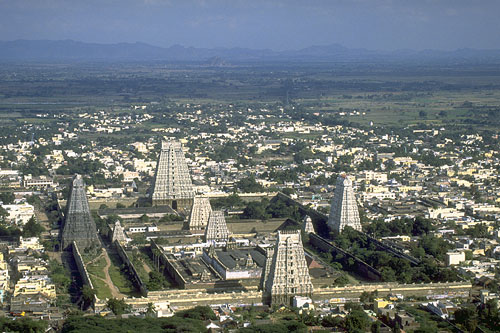
Tiruvanamalai, Tamil Nadu, India
In India there are three major categories of pilgrimage temples dedicated to the god Shiva: Jyotir Lingams; Svayambhu Lingams, and Bhuta Lingams. Located in five south Indian temples, the Bhuta Lingams are said to be places where Shiva manifested himself as the natural elements. The temples and their respective elements are Chidambaram: ether, Sri Kalahasti: wind, Tiruvanaikka/Jambunath: water, Kanchipuram: earth, and Tiruvanamalai: fire. Chidambaram is also associated with the heart, Tiruvanaikka with the stomach, and Tiruvanamalai with the chest.
An interesting legend, told in the excellent book Pilgrimage in the Hindu Tradition by Alan Morinis, tells how the sacred hill of Arunachala came to be associated with the fire Lingam of Shiva. Mourning the loss of his wife Sati, Shiva was wandering nude in the forests of Daruvana and was seen by the wives of certain sages. The women were aroused at the sight and desired to unite with him. The jealous sages cursed the god's linga (phallus) to fall off. As it touched the earth it grew to immense size like a great shining column. The gods Brahma and Vishnu saw it when its top had reached upwards beyond the clouds and its lower end was buried deep in the earth. They decided to investigate. Taking the form of a boar Vishnu dived into the depths of the primeval ocean to reach the base of the column, and Brahma taking the form of a swan flew up to its top. When they returned Vishnu honestly confessed that he could not find the foundations, while Brahma boasted that he had reached the summit. At this moment Shiva appeared, denounced Brahma as a liar, praised Vishnu for his honesty, and declared that the column could not be measured because it was his Linga. At the request of Vishnu, Shiva left part of his Linga in its 'tejas', or fire form, as the Arunachala hill.
The Arunachaleswar Shiva temple in Tiruvanamalai (Tiruvanamalai is the Tamil word for the Sanskrit Arunachala), situated at the foot of the Arunachala hill, is one of the largest (25 acres) and oldest temples in all of south India. The era of its founding is unknown; the complex grew over several millenia and the large towers, called gopurams, were erected between the 10th and 16th centuries. The tallest gopuram is over 60 meters tall and has 13 stories. The central temple enshrines images of Shiva as Lord Annamalai and his consort as Unnamalai. Every year during the Hindu month of Kartikai (November-December), the great Deepam festival is held to celebrate Shiva's manifestation as the light of Arunachala. For ten days the whole city of Tiruvanamalai is alive with celebration, processions, dancing and singing. On the final day of the festival, the eve of the full moon, a huge beacon fire is lighted atop the hill in commemoration of the fire left by Shiva. Many thousands of pilgrims flock to this exciting festival from all over southern India. Arunachala hill is considered a miraculous healing place, especially for ailments of the lungs and barrenness in women. The hill of Arunachala is also a symbol of spiritual knowledge and several great sages have lived here, including Arunagirinathar, the author of the Tiruppugal, and Sri Ramana Maharshi (1879-1950).
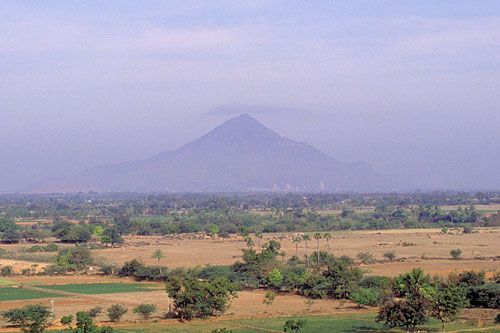
Mount Arunachala with Tiruvanamalai temple complex at the base
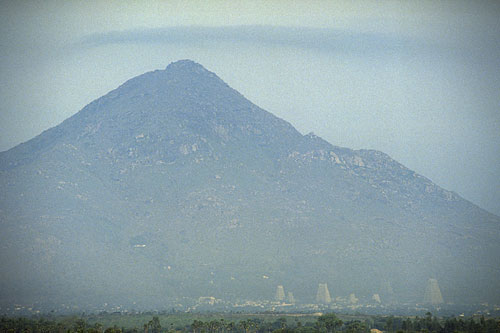
Mount Arunachala with Tiruvanamalai temple complex at the base
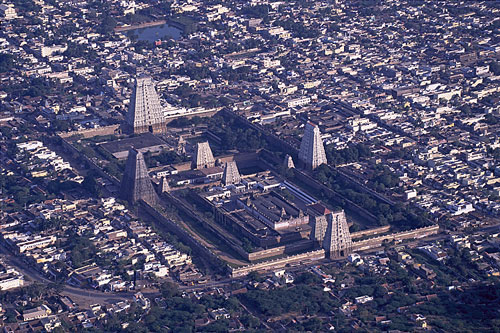
Temple of Tiruvanamalai from the top of Mt Arunchala
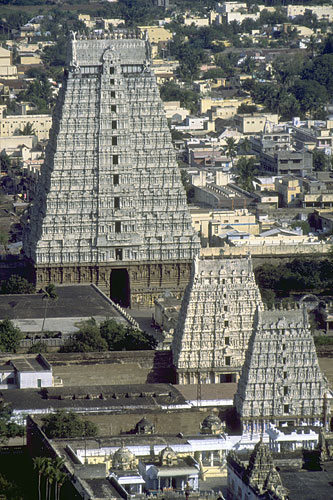
Temple of Tiruvanamalai from the top of Mt Arunchala
For additional information:
 Martin Gray is a cultural anthropologist, writer and photographer specializing in the study of pilgrimage traditions and sacred sites around the world. During a 40 year period he has visited more than 2000 pilgrimage places in 165 countries. The World Pilgrimage Guide at sacredsites.com is the most comprehensive source of information on this subject.
Martin Gray is a cultural anthropologist, writer and photographer specializing in the study of pilgrimage traditions and sacred sites around the world. During a 40 year period he has visited more than 2000 pilgrimage places in 165 countries. The World Pilgrimage Guide at sacredsites.com is the most comprehensive source of information on this subject.India Travel Guides
Martin recommends these travel guides


